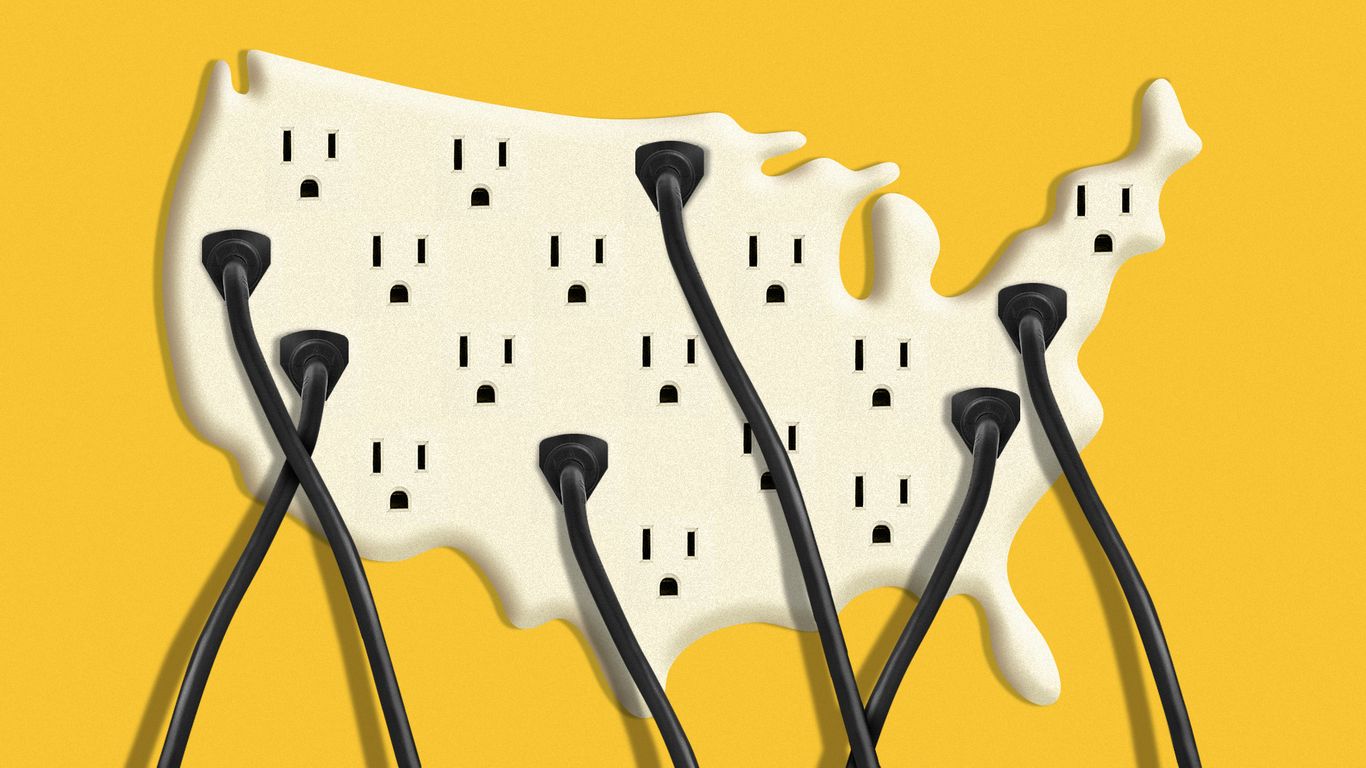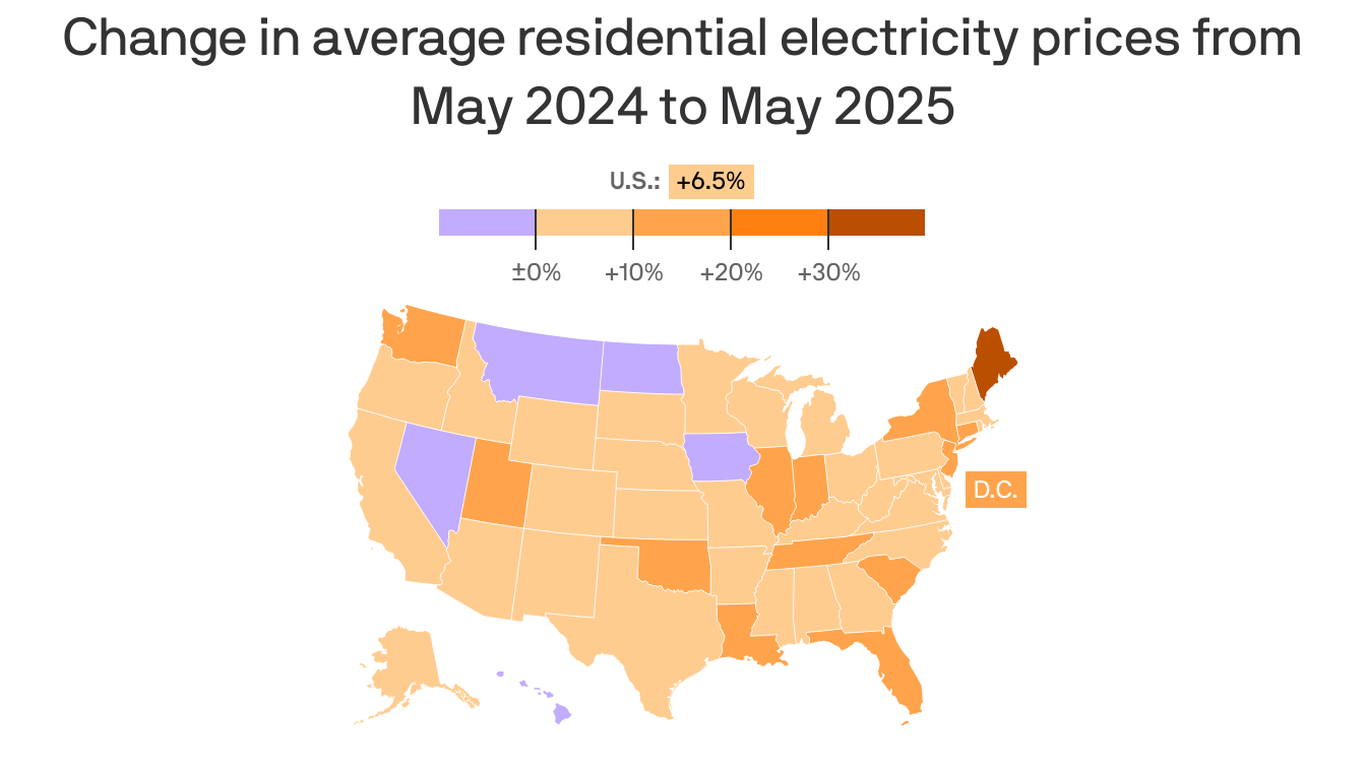#electricity-prices
#electricity-prices
[ follow ]
#energy-policy #energy-demand #data-centers #renewable-energy #ai-infrastructure #utility-bills #inflation
fromFortune
2 weeks agoYour electric bill has replaced the price at the pump as the hot-button, political bellwether | Fortune
Soaring electric and utility bills nationwide are the new political bellwether for consumers heading into a pivotal 2026 midterm election cycle for the first time in recent history, replacing the typical hot-button items of fuel prices and grocery costs-most notably for eggs last year. While costly grid and severe weather upgrades have accounted for much of the price hikes of late, utility bills are projected to continue spiking for years to come because of the AI-driven data center boom and surging natural gas exports driving demand for new power generation and more fossil fuels.
US politics
fromHomebuilding
2 weeks agoHigh electricity bills are stopping homeowners going green
The future of Britain's green home revolution could hinge on one thing - the price of electricity. A new report from Mitsubishi Electric warns that unless power costs are reduced, millions of homeowners will be unable or unwilling to make the switch from gas boilers to low-carbon air source heat pumps. Despite growing public concern about climate change and strong interest in greener heating, electricity remains far more expensive than gas, creating a financial barrier that could derail the country's net-zero ambitions.
Renovation
US politics
fromFortune
3 weeks agoDemocrats had such a big election night they even booted Republicans out of Georgia's Public Service Commission | Fortune
Democrats Peter Hubbard and Alicia Johnson decisively defeated Republican incumbents for the Georgia Public Service Commission, marking the first statewide Democratic wins since 2006.
US politics
fromFast Company
3 weeks agoThe newly elected Virginia and New Jersey governors both promised to lower electricity bills. Here's how
Voters in New Jersey and Virginia elected governors promising to tackle soaring electricity costs by fixing PJM, expanding cheap clean energy, and freezing rates.
#energy-policy
US politics
fromFast Company
6 months agoTrump promised to slash energy prices. 100 days in, they're up-and expected to keep rising
Trump's energy policies have led to rising energy prices, despite promises to lower them.
Energy and electricity prices have increased in Trump's second term, contrary to campaign pledges.
Miscellaneous
fromIndependent
1 month agoTaoiseach responds after energy firms accused of 'price gouging' as report shows they fail to pass on lower costs
Over a million Irish households face electricity price hikes while retail tariffs remain about three times wholesale costs, indicating large retailer margins.
fromAxios
3 months ago5 reasons your electric bill is surging
Limited transmission capacity increases prices by creating "congestion," with overloaded power lines unable to carry more electricity because of overheating risks. That leads to using higher-cost, less-efficient electricity to meet demand. "It's like a two-way highway that was built decades ago that's now expected to carry rush-hour traffic to and from a major city every time - every day of the year [there are] more cars, bigger trucks, constant congestion,"
US politics
fromAxios
3 months agoHere's how power and gasoline costs compare by state
The nonprofit Electric Power Research Institute studied U.S. households' "energy wallet" - what they pay for gasoline, power, natural gas, heating oil and propane, and more. The big picture: Last year, total "wallet" spending averaged $5,530 per household, with $1,860 for electric bills and $2,930 for gasoline. That's pretty similar to 2020 levels in inflation-adjusted dollars. But there was lots of variation in between, largely from gasoline price changes, while power has been steadier.
Environment
US politics
fromwww.theguardian.com
7 months agoDutton admits he made mistake on Indonesia in ABC leaders' debate as Albanese evasive on electricity prices
Peter Dutton admitted to falsely claiming an Indonesian military proposal and stated he made a mistake during a debate.
Labor's lack of commitment on electricity prices contradicts their previous claims, according to Dutton.
[ Load more ]










